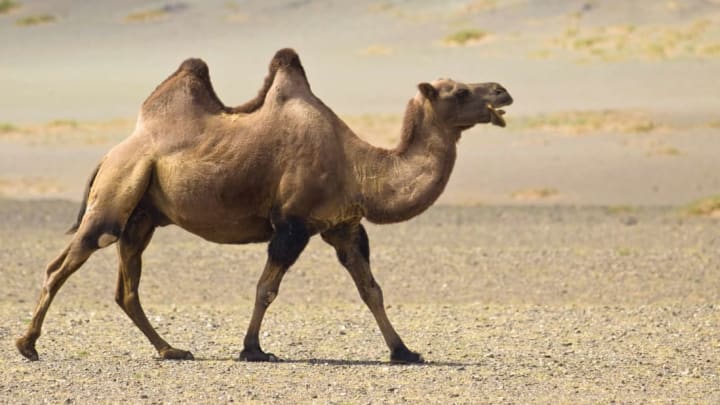Since water is difficult to come by in the desert and camels’ backs have built-in storage compartments, people have long assumed that those two truths are connected. They technically are, but maybe not in the way you thought.
Water isn’t the only scarce resource in the desert—food is, too. So camels consume as much as they can when it’s available, harboring the excess fat in their humps and drawing from that stock whenever there’s no food in sight. According to the San Diego Zoo, the creatures can survive for months without a meal, sometimes losing up to 40 percent of their body weight during that time.
Though the humps aren’t used to store water, they may help camels preserve some of the water found elsewhere in their bodies. As Britannica explains, confining fat to one spot—rather than storing it throughout the body, like many other mammals—means that most of a camel’s surface area isn’t insulating heat. This helps keep its body temperature low during the day, forestalling the need to sweat. When night falls and the desert grows cold, the heat insulated in the hump or humps gets dispersed, keeping the camel warm.
When it comes to staying hydrated, camels’ tactics are less about locking water away in storage and more about using it as efficiently as possible. According to National Geographic, Arabian or dromedary camels (which have one hump) and Bactrian camels (which have two) can both guzzle about 30 gallons of water in 13 minutes. This capability is thanks in part to their elliptical blood cells, whose flexibility helps with water absorption and blood flow. Since camels urinate infrequently, create feces so dry you can actually burn it, and can let their body temperature get as high as 106°F before needing to offload some of that heat through sweat, they’re basically built to retain water and withstand dehydration.
